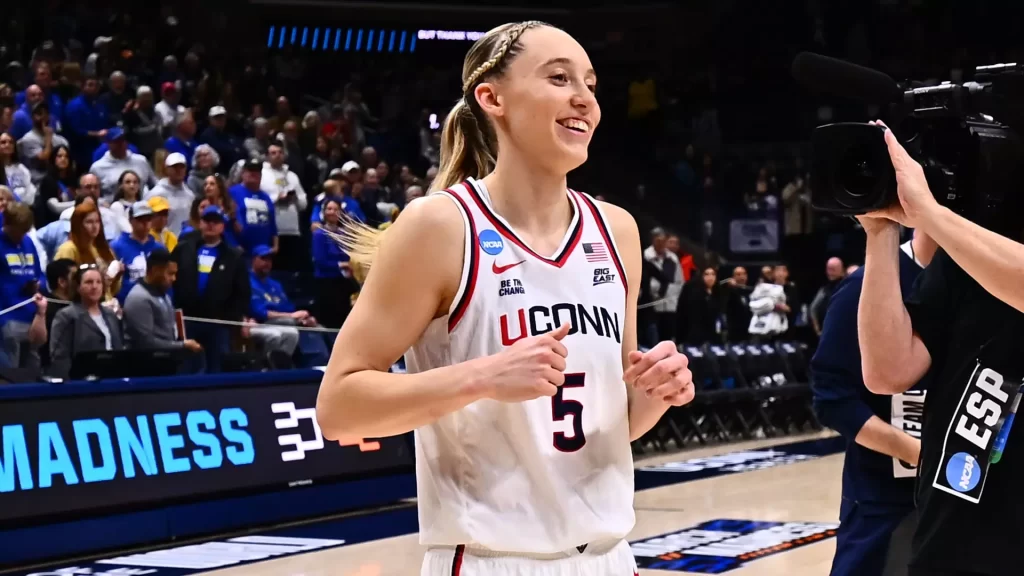Parity has always been a contentious point of discussion in the realm of all sports, but particularly in basketball. In the NBA, fans were upset when the Cleveland Cavaliers played the Golden State Warriors in the NBA Finals for four straight years, with most of those seasons feeling like that matchup was inevitable before the first game was even played.
On the men’s side of things in college basketball, the draw of March Madness is the idea of the “Cinderella story”, where it is entirely possible that mid-major programs from a small liberal arts college can take down one of the powerhouse blue bloods from a top public university.
Yet why is it that in women’s college basketball, a sport that has been consistently dominated by the same programs and has seen teams frequently finish the season with an undefeated record, the lack of parity is often framed as a testament to greatness rather than a flaw in competition?
Well, that’s the point.
Comparing women’s basketball to men’s basketball isn’t the most fruitful exercise, but it is worth noting that perennial dominance of teams and lack of parity in the women’s game does create an intrigue that differentiates them from their male counterparts.
Sports culture in general can be a toxic environment, but misogyny in women’s sports can only compound it. Thus, having bullish figures—whether it be teams, coaches or players—that can drive the popularity and entertainment factor of the sport is necessary, even if it means UConn boringly slams Arkansas State 103-34 in an NCAA tournament game.
Celebrate dynasties. Reward perfection. Embrace women excellence.
In an environment where every talking head on TV or 30-year-old in mama’s basement on social media has something negative to say about women, or sports, or the combination of the two, it’s paramount to platform indisputable greatness on the forefront of the sport. Let the greatness of the Dawn Stayleys, Caitlyn Clarks, Paige Bueckers of the world do the shit-talking, no one can argue with their scoreboards.
Where others may see a problem with the fact that there’s been 10 undefeated seasons in Division I women’s basketball, or that 2023 championship-winning LSU was only good enough for a No. 3 seed despite only losing two games, or that UConn won 10 national championships in 16 years, I see a unique climate of competition that isn’t seen in any other major American sport.
Every season, the same questions emerge, yet the thought of a new unknown answer to said questions fosters fresh excitement. Will the reigning champion be dethroned? Who’s going to be the next superstar player? What program or coach will put themselves on the map this year?
In 2015, these questions were answered when South Carolina led by the aforementioned Dawn Staley seemingly came out of nowhere and dominated their way to their first Final Four appearance in school history. Two years later, they raised a national championship trophy for the first time. Eight years after that and two more championships later (with potentially a third on its way), and South Carolina is now the gold standard in women’s college basketball.
The same kind of story can be said about Geno Auriemma’s dynasty with UConn and Pat Summitt’s legacy with Tennessee.
More recently former college players like Caitlyn Clark and Angel Reese, and now JuJu Watkins and Paige Bueckers are breaking the mold as players who have transcended negative stereotypes about female hoopers, earning respect across the entire sports landscape as icons.
Yes, they’re able to do this because they’re very talented players, but they’re also able to maximize their stardom because of how much they stand out—because of the lack of parity.
And that’s the beauty of women’s college basketball. Dominance isn’t a deterrent—it’s a driving force. The best teams don’t just win, they set the standard, challenging every other program to rise to their level. That chase, that pursuit of excellence, is what makes the sport compelling.
The lack of parity doesn’t mean a lack of competition. It means every game played by a powerhouse program carries weight. Every contender that emerges has to prove they belong. Every upset, when it does happen, is seismic, not just another blip in a tournament bracket.
And let’s be real—people don’t actually hate dominance. They just hate when the team or player dominating doesn’t fit their agenda. No one discredited the legend of Michael Jordan when his Bulls won six titles in eight years, or when UConn’s men’s team went back-to-back just recently. The difference is that in women’s sports, dominance is often used as an excuse to diminish rather than celebrate.
But that narrative is shifting. Women’s college basketball isn’t just growing. It’s exploding. Ratings are up, stars are becoming household names and fans are more invested than ever. That’s not happening in spite of dynasties and dominant players, it’s happening because of them.


